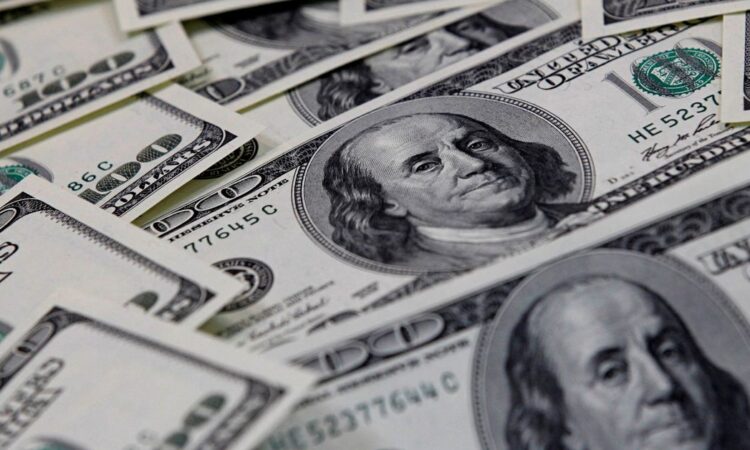
SINGAPORE, Jan 6 (Reuters) – The dollar held near an almost one-month high on Friday, after U.S. economic data highlighted a still-tight labour market that could keep the Federal Reserve on its aggressive rate hike path.
The number of Americans filing new claims for jobless benefits dropped to a three-month low last week while layoffs fell 43% in December, data on Thursday showed.
A separate report also revealed that private employment increased by 235,000 jobs last month, far exceeding expectations for a 150,000 increase.
Against a basket of currencies, the U.S. dollar index rose 0.09% to 105.21, after jumping 0.9% to a nearly one-month peak of 105.27 on Thursday.
The index was on track for a weekly gain of more than 1.6%, its largest since September.
“All the anecdotes about job losses from the tech sector have yet to be reflected in the overall employment data, this suggests that while there’s weakness in some pockets…there’s still strong demand for workers from the other parts of the economy,” said Khoon Goh, head of Asia research at ANZ.
Most major currencies were nursing losses on Friday, after the surging greenback knocked them to multi-week lows in the previous session.
Sterling was last 0.1% higher at $1.1920, having fallen to a six-week low of $1.1873 on Thursday.
The euro rose 0.02% to $1.0522, after tumbling 0.8% to touch a three-week trough of $1.0515 also in the previous session.
Against the Japanese yen , the dollar climbed 0.36% to 133.88 yen, not far from its one-week top of 134.045 yen hit on Thursday.
Markets now turn their attention to the closely-watched nonfarm payrolls report due later on Friday, with economists polled by Reuters forecasting the U.S. economy to have added 200,000 jobs in December. read more
“We could be in for an upside surprise,” said Goh. “This will keep the Fed adamant in continuing to hike rates.”
December’s flash inflation figures for the euro zone will also be out on Friday, where expectations are for an annual inflation rate of 9.7%.
Data from Germany, France and Spain have already showed a slowdown in inflation last month, suggesting that euro zone inflation could come in below expectations.
“The low inflation numbers, all the surprises that we’re getting, seems to be weighing on the euro,” said Ray Attrill, head of FX strategy at National Australia Bank.
“But thinking about it from a terms of trade perspective, the latest weakness in oil and gas prices that we’ve seen is actually very positive for the euro zone growth prospects…so I would actually expect the euro to be drawing more support from that than it actually has been.”
Elsewhere, the Aussie was last 0.1% higher at $0.6759, after sliding 1.3% in the previous session and reversing most of the gains it made earlier in the week on news that China has eased its restrictions on coal imports from Australia.
The kiwi rose 0.24% to $0.6238, following a 1% slump on Thursday, and was on track for a weekly loss of close to 2%, its worst since September.
Reporting by Rae Wee; Editing by Jacqueline Wong and Kim Coghill
Our Standards: The Thomson Reuters Trust Principles.




